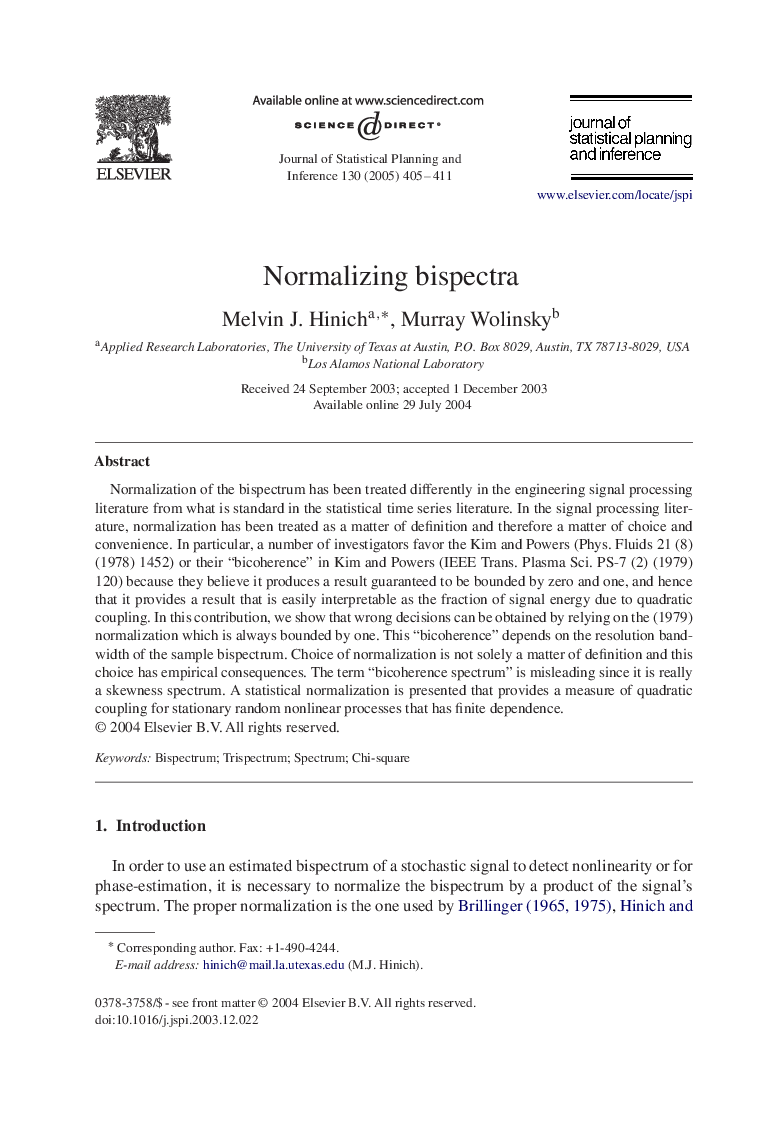| Article ID | Journal | Published Year | Pages | File Type |
|---|---|---|---|---|
| 9741776 | Journal of Statistical Planning and Inference | 2005 | 7 Pages |
Abstract
Normalization of the bispectrum has been treated differently in the engineering signal processing literature from what is standard in the statistical time series literature. In the signal processing literature, normalization has been treated as a matter of definition and therefore a matter of choice and convenience. In particular, a number of investigators favor the Kim and Powers (Phys. Fluids 21 (8) (1978) 1452) or their “bicoherence” in Kim and Powers (IEEE Trans. Plasma Sci. PS-7 (2) (1979) 120) because they believe it produces a result guaranteed to be bounded by zero and one, and hence that it provides a result that is easily interpretable as the fraction of signal energy due to quadratic coupling. In this contribution, we show that wrong decisions can be obtained by relying on the (1979) normalization which is always bounded by one. This “bicoherence” depends on the resolution bandwidth of the sample bispectrum. Choice of normalization is not solely a matter of definition and this choice has empirical consequences. The term “bicoherence spectrum” is misleading since it is really a skewness spectrum. A statistical normalization is presented that provides a measure of quadratic coupling for stationary random nonlinear processes that has finite dependence.
Related Topics
Physical Sciences and Engineering
Mathematics
Applied Mathematics
Authors
Melvin J. Hinich, Murray Wolinsky,
